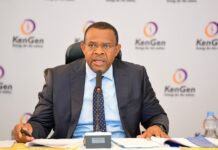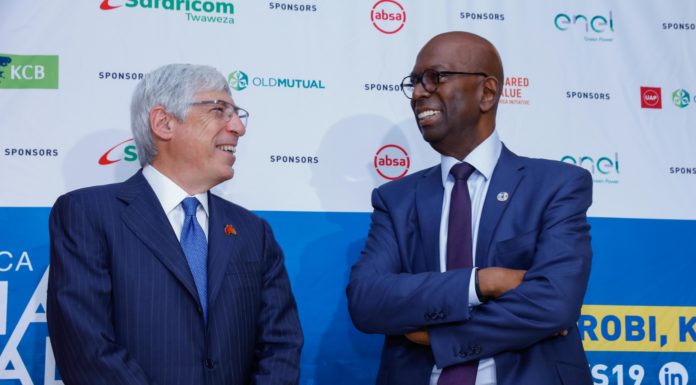BACKGROUND
A novel coronavirus disease (COVID-19) has spread rapidly around the world since it
was first identified in January 2020 in the People’s Republic of China. Existing data from
China and other countries with outbreaks suggest that COVID-19: transmits readily
through person-to-person contact, likely respiratory droplets; causes death from severe
respiratory illness in approximately 2 percent of infected persons; and may be transmitted
by infected people who have no or minimal symptoms. Because no vaccine yet exists to
prevent infection nor medication to cure infection, COVID-19 will likely spread rapidly in
communities and healthcare facilities and cause severe illness and death. Although the
case-fatality remains low, a high percentage of the African population could be infected
in the next year, resulting in large number of deaths, particularly in people with advanced
age and/or underlying illnesses
Although Africa was not directly impacted by the 2002–2003 severe acute respiratory
syndrome (SARS) epidemic, COVID-19 will likely cause widespread illness and death
in Africa. Since 2003, the volume, velocity, and variety of travel between the rest of the
world and Africa has increased dramatically, which will result in initial and continuous
introductions of infected persons from areas with COVID-19 transmission. Africa’s baseline
vulnerability is also high, given its relatively fragile health systems, concurrent epidemics
of vaccine-preventable and other infectious diseases, inadequate water, sanitation, and
hygiene infrastructure, population mobility, and susceptibility for social and political unrest
during times of crisis. One factor that could mitigate deaths in Africa is demography; more
than 50 percent of the population is under 20 years old, a group that has been relatively
spared from illness and death in Asia.
In Africa, the primary strategy for COVID-19 will be to limit transmission and minimize harm.
Given that transmission throughout the continent is inevitable, delaying and diminishing
the peak of outbreaks can help health systems better manage the surge of patients and
communities better adapt to the disruption of social, cultural, and economic activities.
Tactics to achieve this include rapid diagnosis and isolation of infected persons, quarantine
of people who had close contact with an infected person, and social distancing within the
general population. Rigorous infection prevention and control practices will be needed
in healthcare facilities and other high-risk congregate settings, including schools and
prisons. Healthcare facilities will need to restrict hospital admission to infected persons who
absolutely require a higher-level of care, such as intravenous antibiotics, oxygen, ventilatory
or hemodynamic support, and/or management of complex co-morbid conditions.
Limiting transmission and minimizing harm from COVID-19 will require an all-of-government
approach. Social unrest could result from healthcare facilities having insufficient capacity,
stock-outs of essential food, medications, or other supplies, and resistance to social
distancing policies that limit work, school, cultural events, and/or religious practice.
Despite WHO guidance to keep borders open to people and commodities, travel and trade
restrictions have become widespread since mid-January 2020. In Africa, similar closures
could have devastating impacts on health, economies, and social stability in many African countries which depend on trade with neighbors and non-African countries. All government
agencies will need to be involved in implementing COVID-19 response activities, including,
for example, finance, justice, trade, agriculture, education, and finance.
GOALS
1. Prevent severe illness and death from COVID-19 infection in Member States
2. Minimize social disruption and economic consequences of COVID-19 outbreaks
OBJECTIVES
1. Coordinate efforts of Member States, African Union agencies, World Health
Organization, and other partners to ensure synergy and minimize duplication.
2. Promote evidence-based public health practice for surveillance, prevention, diagnosis,
treatment, and control of COVID-19.
OBJECTIVE 1 Coordinate efforts of Member States, African
Union agencies, World Health Organization,
and other partners to ensure synergy and
minimize duplication.
1.1 African Union: Collaborate across African Union to ensure high-level political
commitment and leadership across all sectors involved in COVID-19 response,
particularly Peace and Security, Trade and Industry, Economic Affairs, and Rural
Economy and Agriculture.
1.2 Multilateral: Ensure complementarity and synergy of guidance, advocacy, and
Member State support with World Health Organization, including headquarters and
regional offices for Eastern Mediterranean Region and African Region, and other multi-
lateral partners.
1.3 Regional Economic Communities: Partner with regional economic communities
of Africa to promote implementation of Africa CDC guidance, particularly regarding
borders and trade.
1.4 Member States: Provide technical assistance and essential commodities to Member
States to support an all-of-government approach to COVID-19, consistent with Africa
CDC guidance.
1.5 Private Sector: Support airlines and airports in screening for and management of
COVID-19 cases and collaborate to maintain supply chains for shared resources,
including personal protective equipment, laboratory supplies and equipment, and, if
available and necessary, medical countermeasures.
1.6 Donors, Foundations, and Other Stakeholders: Collaborate with donors,
foundations, academic institutions, and other stakeholders to strengthen public health
capacity for COVID-19 control.
OBJECTIVE 2 Promote evidence-based
public health practice for surveillance,
prevention, diagnosis, treatment, and
control of COVID-19.
2.1 Surveillance: Collect, analyze, and disseminate accurate, timely data about the
epidemiology of COVID-19 in Member States. High priorities include: (a) ensuring
high-quality screening at points of entry, among contacts of cases, and other high-
risk settings, (b) enhancing existing influenza-like illness, severe acute respiratory
illness, and event-based surveillance systems1, (c) supporting complete and prompt
investigation of cases and tracing of contacts; (d) adapting health information
systems for managing case and contact data; (e) monitoring and reporting numbers,
characteristics, and outcomes of cases that are both clinically diagnosed and laboratory
confirmed, (f) investigating rumors and supporting prompt communication to debunk
false stories.
2.2 Laboratory: Ensure quality-assured testing for COVID-19 diagnosis, genotyping,
and special studies. High priorities include: (a) equipping and training public health
laboratories at the national and sub-national level, (b) supporting selected laboratories
to perform next generation sequencing on COVID-19 specimens and open sharing
of sequences, (c) strengthening reference laboratories and laboratory networks for
specimen referral testing and quality assurance, including inter-laboratory comparison
and proficiency testing, (d) facilitating biobanks and evaluation of new assays for
diagnosis or special studies, particularly point-of-care technologies and serology.
2.3 Countermeasures: Support Member States to implement evidence-based
interventions at individual and population-level to reduce COVID-19 transmission.
High priorities include: (a) assessment, monitoring, and movement restrictions in
contacts of and other persons at high risk of COVID-19 infection, (b) implementing
rigorous hand hygiene in all congregate settings, such as schools, prisons, stadiums,
transportation hubs, offices, shopping malls, and large religious congregations, (c)
supporting limited, respectful social distancing, such as closure of schools, in settings
at high risk of widespread transmission.
2.4 Healthcare preparedness: Strengthen capacity of healthcare facilities in Member
States to manage surge in patient visits and to effectively identify, isolate, and manage
people with COVID-19 infection. High priorities include: (a) assessing, developing, and
managing inpatient capacity, including the establishment of temporary shelters, where
necessary, (b) implementing rigorous infection prevention and control, including the
use of respiratory hygiene monitors at entry points, handwashing, and appropriate
use of personal protective equipment, (c) training physicians and other clinicians for
management of severe respiratory infection in both primary and referral settings.
2.5 Risk Communication and Social Engagement: Work with media, key opinion leaders,
and Member States to provide guidance that is clear, comprehensible, evidence-
based, culturally appropriate, and adapted to special populations and circumstances.
High priority activities include: (a) continuous engagement with traditional and social
media, (b) monitoring of rumors and rapid counter-programming to dispel false
information, (c) training of government officials across all sectors in proven methods
of risk communication.
2.6 Supply Chain Management: Establish and maintain supply chains for shared
resources, including personal protective equipment, laboratory supplies and equipment,
and, if available and necessary, medical countermeasures.
2.7 Special Populations, Settings, and Policies: Work with Member States to assess
and manage issues related to special populations (e.g., refugees, internally displaced
persons), analyze and guide on ethical and legal issues (e.g., quarantine, healthcare
triage, travel, trade), and develop plans for continuity of essential public health
operations (e.g., maternal child health programs, immunizations).
OPERATIONS
The strategy will be implemented through two major operational units: (a) Africa Task
Force for Coronavirus (AFTCOR), (b) Africa CDC’s Incident Management System. Details
on AFTCOR are included in the Appendix. Africa CDC activated its IMS on Monday, 27
January 2020 to implement all activities that Africa CDC is directly responsible for. The
major technical activities track to the priority areas described above. The IMS is supported
by the African Volunteer Health Corps (AVoHC), a continental resource for surge staffing
during public health emergencies.
AFTCOR will build upon the existing regional structure of Africa to support Member States.
Each of the five Regional Economic Communities of Africa has an Africa CDC Regional
Collaborating Center (RCC) that is tasked with implementing continent-wide public health
strategies in Member States with due consideration of the different capacity, systems,
and priorities in those regions. Working with and through the RCCs, AFTCOR will support
Member States to adopt a parallel operational structure for COVID-19, including:
a. Incident management system, ideally run by a National Public Health Institute or
its equivalent that includes a dedicate emergency response group for liaison to all
stakeholder government agencies.
b. Coronavirus Task Forces that include critical non-government stakeholders to cover
all essential technical areas, including surveillance, laboratory, countermeasures,
healthcare preparedness, risk communication and social engagement, and supply
chain management.
AFTCOR and the RCCs will provide technical guidance and policy recommendations,
support deployment of African subject matter experts for on-site technical assistance,
particularly for complex or large outbreaks, and convene stakeholders to align strategies
and tactics and exchange information about best practices.
Implementation will proceed in a phased approach, such as:
1. Support training and other capacity enhancements in Member States at highest risk
for COVID-19 introduction and transmission.
2. Implement systems for continuous quality improvement in Member States at highest
risk for COVID-19 introduction and transmission. An essential component of quality
improvement is simulation exercises, such as ‘table top’ exercises for high-level
coordination, mock patients for countermeasures and healthcare preparedness,
proficiency testing panels for laboratory testing, and stress tests for supply chain.
3. Expand training and other capacity enhancements to all Member States.
4. Implement systems for continuous quality improvement in all Member States.
A similar approach is recommended for Member States to build capacity and ensure quality
at the sub-national level.
APPENDIX
Africa Task Force for Coronavirus (AFTCOR)
Scope
AFTCOR will be the Africa-wide collaboration for COVID-19 preparedness and response
with a focus on six technical areas:
1. Surveillance, including screening at points-of-entry
2. Infection prevention and control (IPC) in healthcare facilities
3. Clinical management of persons with severe COVID-19 infection
4. Laboratory diagnosis and subtyping
5. Risk communications
6. Supply chain and stockpiling medical commodities
Objectives
1. Discuss and achieve consensus on complex technical and policy issues.
2. Promote coordination of data collection, analysis, and sharing.
3. Effectively transmit critical information to key decision makers in Member States.
4. Identify urgent needs for training or other capacities within Member States.
Operations
Structure and Membership
AFTCOR will be led by a Steering Committee chaired by the Africa CDC Director. The
Steering Committee will be responsible for:
1. Assessing and revising the overall continent-wide strategy for COVID-19 to adapt to
changing circumstances;
2. Coordinating and convening stakeholders across the continent to align with AFTCOR
priorities
3. Overseeing Working Groups to ensure they are delivering on their objectives, and
removing any obstacles to their effectiveness
AFTCOR will be divided into Working Groups that will regularly report to the Steering
Committee. Membership on Working Groups will include representatives of Member States,
Africa CDC, WHO/AFRO, and WHO/EMRO. Any member state can nominate technical
subject matter experts to join each of the Working Groups, with the goal of aiming for
about 10 members in each, ideally with participation from each of the five regions. Each
Working Group will be co-chaired by one representative from Africa CDC and at least one
representative of a Member State. The co-chairs of the will be responsible for managing
membership and participation in their group.
Meetings
AFTCOR will convene at least once per week and be conducted remotely (e.g., tele or video
conference), unless a decision is made to convene in person.
Working Groups will convene periodically according to a schedule set by the co-chairs. The
co-chairs of the Working Groups will be responsible for distributing an agenda at least one
day before each meeting that includes: (a) latest data or scientific references for the focus
area, (b) specific high priority policy or capacity questions for the group to discuss and decide.
Deliverables
Decisions and/or action items of the committee will be sent to Africa CDC for inclusion in
Africa CDC’s periodic updates to Member States about COVID-19.
Leadership of the Working Groups
Working GroupCo-Chairs
1. Surveillance, including screening at
points-of-entry
Dr Lyndah Makayotto – Kenya
Dr Justin Maeda – Africa CDC
2. Infection prevention and control in
healthcare facilities
Dr Chikwe Ihekweazu – Nigeria
Dr Mohammed Abdulaziz – Africa CDC
3. Clinical management of persons with
severe COVID-19 infection
Dr Natalie Mayet – South Africa
Dr Raji Tajudeen – Africa CDC
4. Laboratory diagnosis and subtypingDr Amadou Alpha Sall – Senegal
Dr Yenew Kebede Tebeje – Africa CDC
5. Risk communicationsDr Moussif Mohammed &
Prof. Abderrahmane Maaroufi – Morocco
Dr Djoudalbaye Benjamin – Africa CDC
6. Supply chain and stockpiling medical
commodities
Dr Rene Ekpini – UNICEF
Dr Merawi Aragaw – Africa CDC
Working Groups
Each Working Group will build, test, and expand specific capabilities of Member States to
prepare and response to COVID-19 transmission. To ensure capabilities are truly improving,
AFTCOR will work with Member States to monitor and evaluate progress, including identifying
gaps that can be addressed through guidance, technical assistance, supplies, or other means.
1. Surveillance, including screening at points-of-entry
• Convene and facilitate multi-sectoral port-of entry surveillance
training events, bringing together national surveillance units,
port health leads, airlines, and airport authorities across Africa to
strengthen detection of COVID-19 cases.
• Convene and facilitate training in event-based surveillance to
strengthen ability to detect potential COVID-19 clusters in healthcare
facilities and community settings, through tactics such as hotlines
and media scanning and conduct effective contact tracing protocols.
• Provide on-site technical assistance as needed to support
case investigations, contact tracing, and coordination across
stakeholders, e.g., standardization of methodologies.
2. Infection prevention and control in healthcare facilities
• Convene and facilitate training for national IPC focal persons and
port health IPC focal persons to strengthen IPC at points of entry
and in healthcare facilities.
• Provide on-site technical assistance as needed to Member States for
development and implementation of protocols in healthcare facilities.
• Develop and update readily comprehensible, practical IPC
guidance, based on evolving evidence and guidance from WHO.
3. Clinical management of persons with severe COVID-19 infection
• Develop network of clinicians who meet regularly online to exchange
information and provide consultation on clinical management of
COVID-19 patients.
• Develop and promulgate training materials via online courses, online
case studies, and social media vignettes to support evidence-base
care of COVID-19 patients.
• Supply member states with up-to-date information from clinical
trials regarding COVID-19 treatment.
4. Laboratory diagnosis and subtyping
• Convene and facilitate training of laboratory diagnostic professionals
at national and sub-national levels for primary diagnosis of
COVID-19.
• Coordinate supplies of reagents to trained laboratories and connect
countries with manufacturers to guarantee a regular supply. Create
and manage an emergency stockpile of additional reagents at
Africa CDC headquarters, rapidly deploying as needed to member
states as positive cases emerge.
• Implement and monitor internal and external quality assurance
programs at diagnostic laboratories.
• Strengthen network for next generation sequencing and biobanking of
SARS-CoV-2 across the continent
5. Risk Communications
• Convene and facilitate trainings and simulations for government
officials in multiple sectors in proven methods of risk communication
to manage public information flow during a potential outbreak
• Develop and continuously update COVID-19 informational materials
that is clear, comprehensible, and evidence-based that in-country
communications staff can tailor based on cultural context and
disseminate to inform general public and dispel false information
in the event of an escalating outbreak
• Continue to prepare, update, and release timely information member
states through the Africa CDC website, social media channels, and
directly to NPHIs on disease spread, new science, and updated
policy guidance
6. Supply chain and stockpiling
• Work with existing supply chain systems to stand up functioning
regional lab referral networks to help countries without diagnostic
capacity find a suitable, timely option for testing
• Build and manage relationships with reliable manufacturers, and
connect member states who either have depleted stockpiles or who
are anticipating meaningful needs given positive cases
• Build out a stockpile and manage supply chains for shared
continental resources such as personnel protective equipment,
laboratory supplies and equipment, and if necessary, medical
countermeasures



















